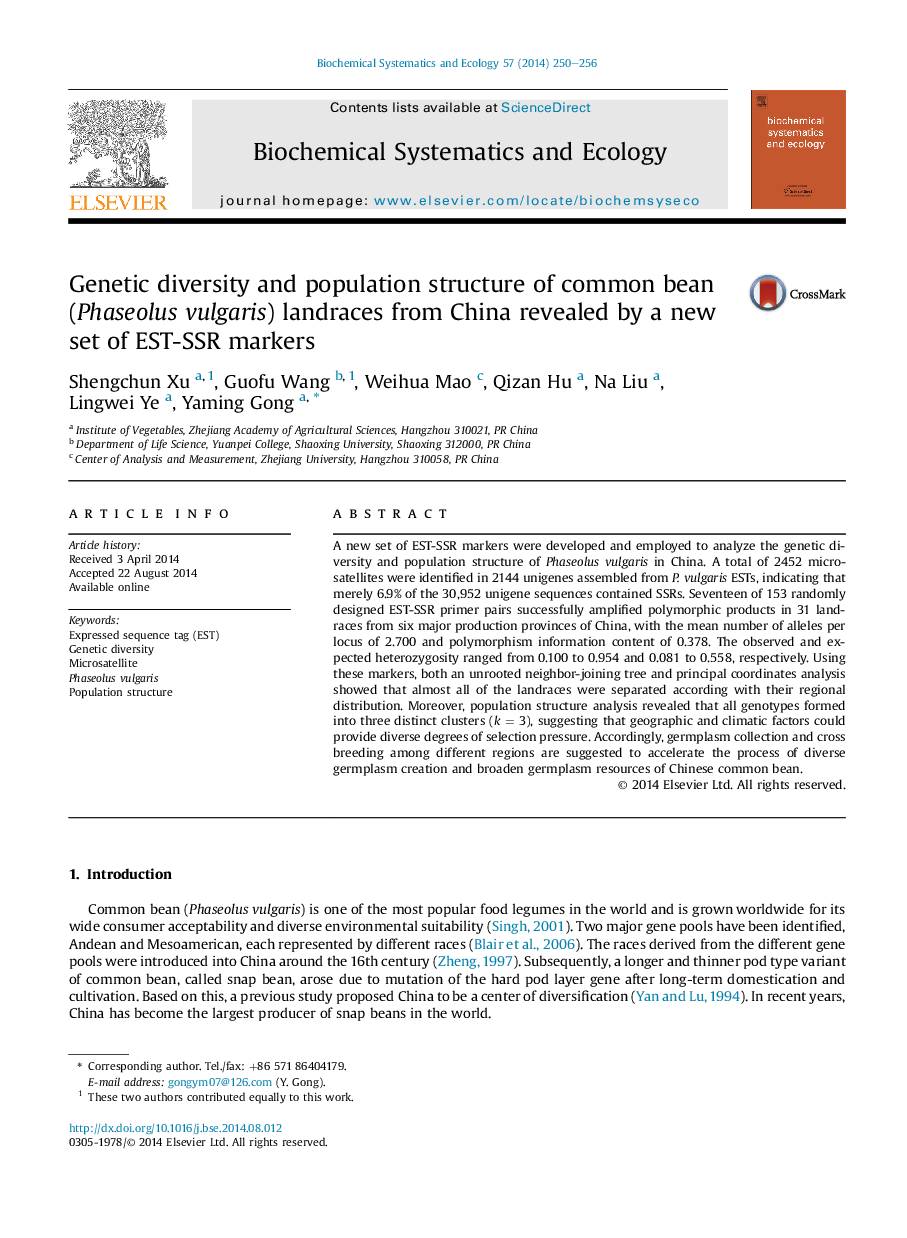| Article ID | Journal | Published Year | Pages | File Type |
|---|---|---|---|---|
| 7768439 | Biochemical Systematics and Ecology | 2014 | 7 Pages |
Abstract
A new set of EST-SSR markers were developed and employed to analyze the genetic diversity and population structure of Phaseolus vulgaris in China. A total of 2452 microsatellites were identified in 2144 unigenes assembled from P. vulgaris ESTs, indicating that merely 6.9% of the 30,952 unigene sequences contained SSRs. Seventeen of 153 randomly designed EST-SSR primer pairs successfully amplified polymorphic products in 31 landraces from six major production provinces of China, with the mean number of alleles per locus of 2.700 and polymorphism information content of 0.378. The observed and expected heterozygosity ranged from 0.100 to 0.954 and 0.081 to 0.558, respectively. Using these markers, both an unrooted neighbor-joining tree and principal coordinates analysis showed that almost all of the landraces were separated according with their regional distribution. Moreover, population structure analysis revealed that all genotypes formed into three distinct clusters (k = 3), suggesting that geographic and climatic factors could provide diverse degrees of selection pressure. Accordingly, germplasm collection and cross breeding among different regions are suggested to accelerate the process of diverse germplasm creation and broaden germplasm resources of Chinese common bean.
Keywords
Related Topics
Physical Sciences and Engineering
Chemistry
Organic Chemistry
Authors
Shengchun Xu, Guofu Wang, Weihua Mao, Qizan Hu, Na Liu, Lingwei Ye, Yaming Gong,
